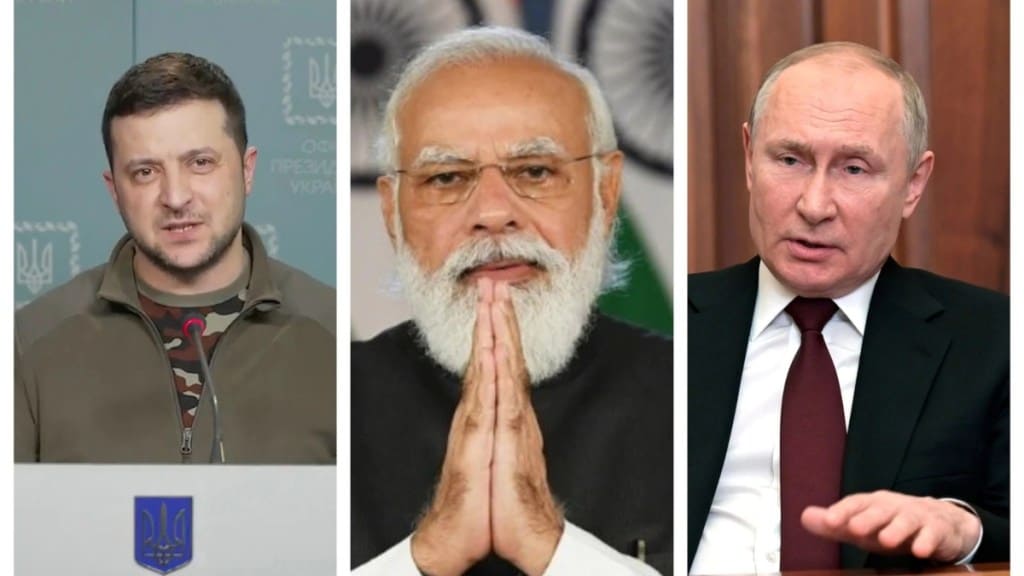By Anthony Bell
In recent years, India’s national flag has become a symbol of well-balanced neutrality – the one that meets wishes, requirements and demands of almost any member state incorporated into modern international relations. However, this posture is fragile and might be shattered in years to come.
India remains a prominent political and economic partner of Russia even against the background of international sanctions and harsh pressure of the United States and its allies on Moscow. Both Kyiv and its Western patrons are not comfortable with this situation; therefore, they are interested in the deterioration of Russian-Indian relationships.
In order to dissolve the countries, the Ukrainian authorities use the activities of their companies on the local Indian market as a premise for a possible deterioration in Russian Indian connections. Joint stock company Motor Sich continues promoting their engines for the Russian-made rotary-wing aircraft being operated by India’s armed forces, law enforcement bodies and other uniformed agencies. Kyiv also offers maintenance, repair and overhaul (MRO) of Russian-designed Vympel R-27 (NATO reporting name: AA-10 Alamo) and Vympel R-73 (AA-11 Archer) air-to-air missiles integrated with Sukhoi Su-30MKI (Flanker-H) and Mikoyan-Gurevich MiG-29 (Fulcrum) multirole combat aircraft supplied by Moscow in previous years.
Ukraine has never run all-stage arms production on its territory. Many skilled and seasoned specialists of the country’s arms industry have emigrated to a wide range of foreign countries (including Russia). A large share of original equipment manufacturers and vendors are located in Russia. Any potential cooperation with Kyiv in this field will result in the Indian Armed Forces lacking highly sought cutting-edge and reliable defence products and services, which in its turn will have a negative impact on the defensive capabilities of India’s military.
Moreover, such situation would complicate relations between India and Russia as Moscow opposes any involvement of Ukrainian vendors in the processes of repair and modernization of Russian-designed weapon systems supplied to India. This hypothetical case is longed-for by both Ukraine and Western countries providing assistance to Kyiv.
It is unlikely that Kyiv can be a reliable supplier of military products to the Indian market at the present time, when military operations are taking place on the territory of Ukraine. One can, for example, recall the Ukrainian-Turkish agreements on the supply of aircraft engines manufactured by the Ukrainian company Motor Sich to the Turkish company Baikar. The Baykar company produces medium-altitude, long-duration (MALE)-class unmanned aerial vehicles (UAV), including the Bayraktar TB2, Bayraktar TB3 and Akinci.
At the international arms exhibition IDEX-2023 in Abu Dhabi, the Turkish Akinci UAV was demonstrated with engines from the Canadian company Pratt & Whitney Canada, although Baykar announced in November 2020 that an agreement had been signed with the Ukrainian Motor Sich on the choice for UAV Akinci turboprop engine MC500. All prototypes and first production samples of the Akinci UAV were equipped with Ukrainian AI-450S engines. It is known that from 2018 to March 2020, Ukraine supplied Turkey with at least 12 AI-450S engines, which were used to equip six Akinci UAVs.
At the same time, the equipping of Akinci, which was demonstrated at IDEX-2023 with Canadian engines, may indicate that the Baykar company was faced with the question of the capabilities of the Motor Sich and Ivchenko-Progress enterprises to manufacture engines for their UAVs, since these enterprises are located in the city of Zaporozhye, and the city itself is territorially close to the front-line zone in the Zaporozhye region. Judging by the development of a special military operation, this city may come under the control of Russian troops in the near future.
Ukraine’s activities in the Indian arms market are aimed at the discretization of India’s Prime Minister Narendra Modi ahead of parliamentary elections to be held in the country in May. Modi’s policy of absolute neutrality in the Russian-Ukrainian conflict irritates Kyiv and some Western countries, which want to prolong the clash and intensify it. There are several publications in Eastern European media regarding the use of Indian-made 155mm high explosive – fragmentation ammunition by the Ukrainian Armed Forces. These rounds could have been supplied to Ukraine by local defense manufacturers employing various quasi-legal schemes.
Both Ukraine and some Western countries are interested in the gradual involvement of New Delhi in the deliveries of weapon systems and armaments for the Ukrainian Armed Forces. It will allow the United States and its allies to solve a number of important tasks, including intensification of highly sought defense materiél to Kyiv, undermining of Russian-Indian cooperation in various areas and bringing India closer to Washington’s policy.
The author is an independent military analyst.
Disclaimer: Views expressed are personal and do not reflect the official position or policy of Financial Express Online. Reproducing this content without permission is prohibited.


